Lee's Summit, MO Pollen and Allergy Report for Summer 2023
Pollen Allergy Trends in Lee's Summit, MO
When is pollen lowest in Lee's Summit, MO?

February
Lowest month total PPM
Avg. PPM
When is pollen highest in Lee's Summit, MO?

April
Highest month total PPM
Avg. PPM
How does pollen in Lee's Summit, MO compare to Missouri?
Lee's Summit has a higher average PPM than the state of Missouri.
Lee's Summit yearly avg PPM:
Missouri yearly avg PPM:
How does pollen in Lee's Summit, MO compare to the USA?
Lee's Summit has a higher average PPM than the USA.
Lee's Summit yearly avg PPM:
USA yearly avg PPM:
Is pollen worse this year in Lee's Summit, MO?
Spring 2023 was worse than spring 2022.
Spring 2023 PPM:
Spring 2022 PPM:
Average PPM in Lee's Summit, MO

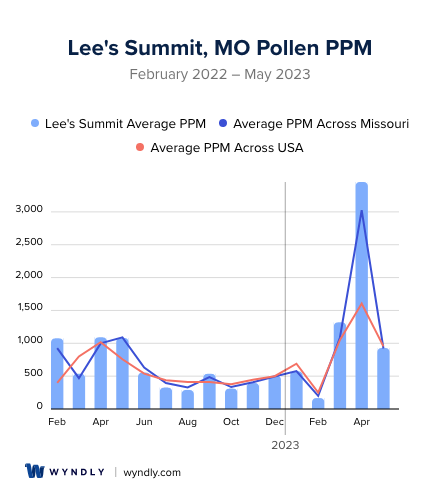
Lee's Summit, MO Pollen and Allergy Breakdown by Month
Grass
When is grass pollen highest in Lee's Summit, MO?
February has the highest grass pollen in Lee's Summit, MO with an average PPM of
When is grass pollen lowest in Lee's Summit, MO?
November has the lowest grass pollen in Lee's Summit, MO with an average PPM of
Tree
When is tree pollen highest in Lee's Summit, MO?
April has the highest tree pollen in Lee's Summit, MO with an average PPM of
When is tree pollen lowest in Lee's Summit, MO?
October has the lowest tree pollen in Lee's Summit, MO with an average PPM of
Weed
When is weed pollen highest in Lee's Summit, MO?
April has the highest weed pollen in Lee's Summit, MO with an average PPM of
When is weed pollen lowest in Lee's Summit, MO?
February has the lowest weed pollen in Lee's Summit, MO with an average PPM of
Lee's Summit, MO Pollen Monthly Breakdown by Pollen Type

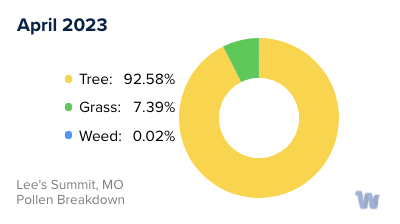

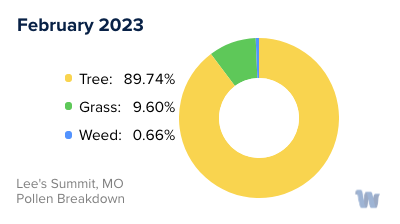
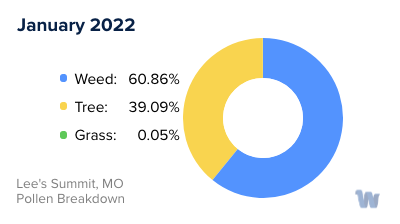
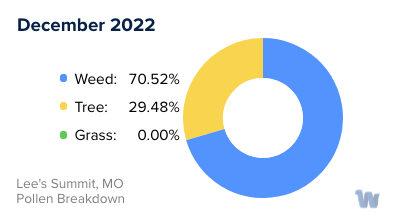

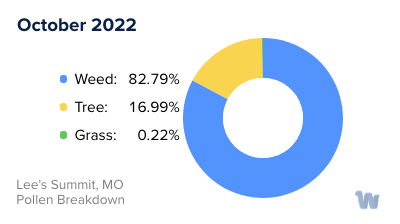
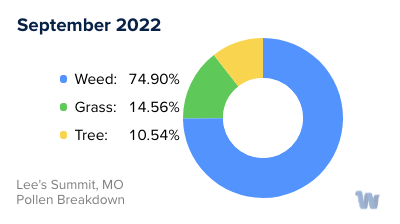
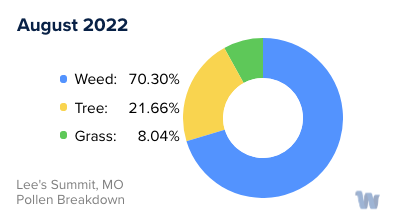


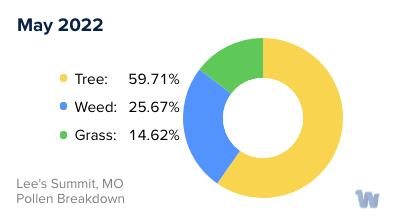
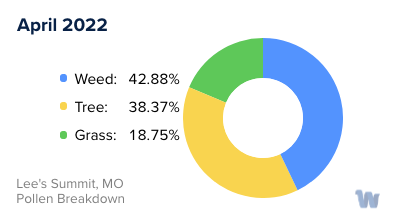
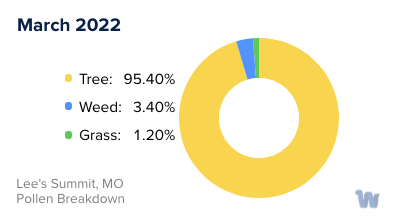

Pollen and Hay Fever in Lee's Summit, MO
When it comes to pollen allergies in Lee's Summit, Missouri, it's essential to understand the types of pollen and when they're most prevalent. The primary producers of pollen in the region are grasses, trees, and weeds. Each of these producers has a specific time of year when they release their pollen into the air, causing potential discomfort for those with pollen allergies.
Tree pollen, including oak, hickory, ash, cedar, and cottonwood trees, is the main allergen in the spring. After the cold Missouri winter, the allergy season commonly begins in late February, with tree pollen levels typically peaking in the spring months.
As the weather warms, grass pollen becomes the primary allergen during the summer months. Grass types like ryegrass, Timothy grass, Bermuda grass, fescue grass, and orchard grass are the main contributors to the pollen count during this time.
As summer fades into fall, weed pollen takes center stage. Weeds such as ragweed, pigweed, thistle, and marsh elder are the key sources of allergens during the late summer and fall. The allergy season typically winds down towards the end of October or early November, offering residents a respite from outdoor allergens.
During the peak allergy months of April, May, June, and September, it's recommended to monitor the local pollen counts. This can help individuals understand the best times to venture outdoors when pollen counts may be lower, such as in the evenings.
Though the winter months typically see a reduction in outdoor allergens, it's worth noting that indoor allergens can still pose challenges for many residents during this time. Understanding the patterns and timing of pollen allergies can help those affected better navigate life in Lee's Summit, Missouri.


